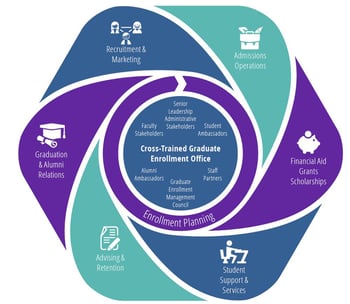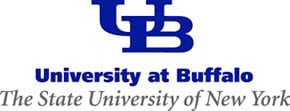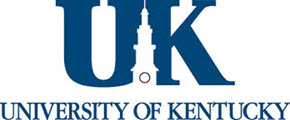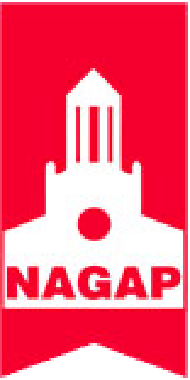What is GEM?
Graduate Enrollment Management
NAGAP and GEM
Graduate Enrollment Management (GEM)
Graduate enrollment management (GEM) is a systematic approach to managing the graduate student lifecycle from initial awareness to alumna/alumnus by integrating the core functions associated with the enrollment and support of a graduate student.
In order to establish the best practices of graduate enrollment management (GEM) and to formalize the GEM field, NAGAP’s Research and Global Issues Committee conducted a multi-layered research study to discover, clarify, and record themes regarding GEM practitioners’ perception of GEM and how GEM fits within their institution’s strategic enrollment management system.
The researchers believe identifying best practices for GEM may be beneficial in creating visibility with senior leadership and facilitating knowledge of the similarities and differences between enrollment management at the graduate and undergraduate levels. Having a clear, consistent, and commonly accepted understanding of GEM can provide insights to inform institutions’ strategic planning processes.
Below you will find resources created as part of this initiative.

Expanded Definition
What is GEM?
Graduate enrollment management (GEM) represents a comprehensive approach to the methods by which an institution recruits, admits, supports, retains, and graduates post-baccalaureate students in their respective degree programs. This dynamic paradigm includes codependent functions working congruently to strategically manage overall enrollment levels and the student experience. These include enrollment planning, marketing, recruitment and admissions, academic advising, financial aid, student services, retention, and alumni relations.
Regardless of staffing levels, utilizing an integrated interdependence model in GEM may create an environment whereby cross-trained professionals in a graduate office are able to support a student throughout their time at the institution. This approach creates an environment that sustains differentiated student experiences.
GEM organizational structures have multiple models that range from decentralized to centralized, including a number of hybrid models, such as a centralized GEM office that works collaboratively with other decentralized departments. Two emerging concepts support institutional priorities that address various resource limitations, while simultaneously focusing on the student’s experience and the institution’s competitive advantage:
Integrated Interdependence: The Emergence of Graduate Enrollment Management
 AS U.S. COLLEGES AND UNIVERSITIES continue to grapple with rising tuition costs, increasing competition for scarce resources, and calls for more accountability (Selingo, 2013), institutions may look to strategically examine how to best recruit and retain students. At the forefront of enrollment is recruiting and admissions. At the graduate level, creating a full service graduate enrollment management (GEM) student lifecycle support operation with knowledge-based expertise in enrollment planning, data analytics, budgeting, advising, registering students, and financial aid is critical to both programmatic and institutional viability. The emerging concept of GEM may improve productivity, continuity and, above all else, create a differentiated student experience. This is especially challenging given that services for graduate students have been traditionally under-resourced as compared to undergraduate education and the GEM sector is only beginning to be formalized (Williams, 2008).
AS U.S. COLLEGES AND UNIVERSITIES continue to grapple with rising tuition costs, increasing competition for scarce resources, and calls for more accountability (Selingo, 2013), institutions may look to strategically examine how to best recruit and retain students. At the forefront of enrollment is recruiting and admissions. At the graduate level, creating a full service graduate enrollment management (GEM) student lifecycle support operation with knowledge-based expertise in enrollment planning, data analytics, budgeting, advising, registering students, and financial aid is critical to both programmatic and institutional viability. The emerging concept of GEM may improve productivity, continuity and, above all else, create a differentiated student experience. This is especially challenging given that services for graduate students have been traditionally under-resourced as compared to undergraduate education and the GEM sector is only beginning to be formalized (Williams, 2008).
Case Studies
GEM Organizational Structures
NAGAP members discuss their experience working in an integrated graduate enrollment management environment.
These case studies represent a cross-section of institutions large and small, both public and private, that have taken steps toward integrating and addressing the comprehensive needs of graduate students through one office, rather than with individual offices across a university each handling a different segment of the student lifecycle.
Each of the institutions in these case studies handled the implementation of a unified graduate enrollment management plan differently and find there to be different strong points and benefits relating to their workflow and processes.
The University at Buffalo
McDaniel College
SUNY at Potsdam
University of Kentucky
Reflections from Christopher Connor, Assistant Dean for Graduate Enrollment Services
The development of our Graduate Enrollment Services office came out of a need for oversight and strong leadership for all of the graduate programs. In the process of developing this office, we were also able to give more attention to areas in need.
One of the primary benefits that arose out of moving to this type of model was to ensure there was not a duplication of services. We were able to get a better grasp on the return on investment across the board and develop better collaboration between schools. In turn, this meant that we could provide better services for our students.
We certainly saw benefits to unifying services. A single application across the university offered improved transparency as well as better admissions planning and management. We were able to form partnerships with academic units as well as administrative offices. This has become a university-wide model. Our Graduate Enrollment Services office has substantially increased visibility across the holistic lifecycle spectrum and raised awareness on campus for graduate students. More niche-based information has arisen, allowing us to more appropriately address the concerns and see to the needs of our graduate students.
Structurally, I work under the Vice Provost for Enrollment Management. It has given us more visibility being directly connected to their office. This has also allowed us to work with a larger budget. One of the areas we have found there to be some difficulties is the lack of faculty representation. I could see how stronger faculty representation could certainly improve academic relationships. For some time, our office was focused not just on the graduate level but on the undergraduate level as well. Being in this position has also provided insight into the significant differences between undergraduate and graduate levels in terms of the needs of the respective areas: How money is spent, where resources are devoted, etc.
Though there were some pains with a focus on both areas, there were also some useful things that benefited the graduate level. Our ability to establish relationships and cultivate prospective graduate students from our undergraduate population was greatly improved and we were better situated to retain students for their graduate training. While these relationships can prove beneficial, I believe that a better-suited model maintains separate graduate and undergraduate enrollment management offices, with cross-communication to help with the recruitment and enrollment pipeline.
One critical aspect to providing the best service to graduate students is to ensure that we operate as a unified system. Not just sending students to an office, but to specific people. We’ve developed a network of colleagues across the student service areas, and this has improved services for our graduate students across the board.
Coming together under a Graduate Enrollment Services model allowed us to address the leadership as a unified team. This has been very helpful in the way our concerns are addressed. The problems we bring up no longer represent the issues of a small single program, but rather are problems for the graduate programs overall.
My advice for colleagues considering making this move on their campuses is to focus on continual assessment and be adaptable to change. Data and assessment are critical. It is important to understand what your stakeholders think of your office.
Reflections from Crystal Perry, Assistant Director of Graduate Enrollment Management
The primary pressure that lead to our restructure under a graduate enrollment management model was the reality of severe budget cuts. Our assistant director positions for both recruitment and diversity were eliminated. As we looked to reorganize, we were tasked with taking on more responsibilities with fewer resources. We were fortunate to have a good person step up to the challenge, and by emphasizing an integrated model, the graduate school was able to reorganize and develop a structure that focused on getting done what needed to get done.
The move didn’t produce so much a financial savings, but rather a shift in the distribution of work. We were able to implement a campus-wide application system. Standardization developed out of our office meant we could better assist with processes across the entire campus.
Creating a fluid process didn’t happen overnight. There was significant planning, strategy and relationship building before things became fluid. It was challenging for all involved. We now have some overarching responsibilities that could be viewed as a form of cross-training; we are all working to help each other.
The move to a graduate enrollment management model has our office reporting to the Provost. This position allows us to meet the range of needs of our student population – and if we don’t know the answer, we know where to go to find it.
It is important to talk about graduate education and educate our leadership. We are competing for resources at the graduate level that undergraduate units already have. Promoting a better university-wide understanding of the unique differences of graduate programs helps us all to better support our graduate populations.
My advice for colleagues considering making this move on their campuses is to trust in the good of people who want to do a good job serving our students. Graduate assistants can be a conduit to the student population and can help the office view things through the lens of the student. Above all else, you must be flexible.
Reflections from Joshua LaFave, Director of the Center for Graduate Studies
The Center for Graduate Studies operates on a graduate enrollment management model and our office is fully cross-trained. This allows us to better see to the needs of the graduate students. It has also allowed us to develop relationships with faculty and improve interaction with our students.
In terms of a reporting relationship, our office reports to the Dean of Graduate Studies who reports to the Provost/Vice President for Academic Affairs. One of the benefits of this structure is that it gives us much more of a voice on campus.
We originally presented the idea of our new model of service as turning our office into a one-stop shop for the students. Though we might not be able to address all the needs of every student, at the very least we have developed a networked and cross-trained unit. If we cannot help them directly, my team does know who can and how to connect the students to those individuals. Our goal is not to send them on a scavenger hunt across campus, but to give elevated service regardless of what “stage” they are in their time as a graduate student.
This has this helped considerably with visibility and campus relationships. We are fortunate to have a very supportive dean. This approach enables us to synchronize our operations and enhance what we do in everything ranging from recruitment to student services, and more. In addition, we created a GEM Council, where administration and faculty work together in open and transparent ways to improve every aspect of the student experience, and overall graduate student enrollment. By utilizing an integrated model and developing goals focused on the full student lifecycle, we were able to deliver a differentiated service and experience to students, while simultaneously realizing operational efficiencies and budget savings.
Reflections from Patricia Bond, Senior Assistant Dean of the Graduate School
The Graduate School at the University of Kentucky was developed with an integrated graduate enrollment management model from the beginning. We see a number of benefits from this model: strong collaboration, efficiency, and consistency across the “brand.” We also benefit from shared resources and smarter purchasing decisions, better balancing of workloads and even improved decision making with a focus on the overall strategic plan rather then the focus of any one department or program.
We have support staff for the academic programs as part of our team of graduate enrollment managers. This means they are also cross-trained and understand the use of technology for communication with prospective students, which has allowed for better retention of our students and improvements in moving them into the admissions cycle, and this has been without any significant costs.
We report to the Vice President for Enrollment Management. We are a “students first” institution, and this is not just lip service. Our office is extraordinarily responsive to our students and their needs. We have a great degree of visibility and we have established primary contacts in all offices working with graduate students. This enables the students to get the information they need in an easily accessible way.
My best advice to colleagues considering a model like this on their campuses is to remember that change is the only constant. Be flexible. Look for what you can improve and how you can better serve your students.






